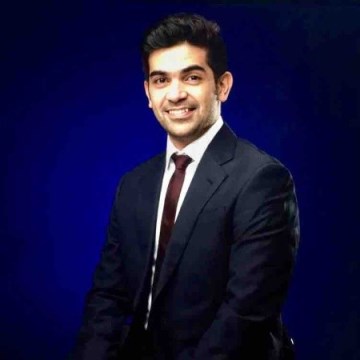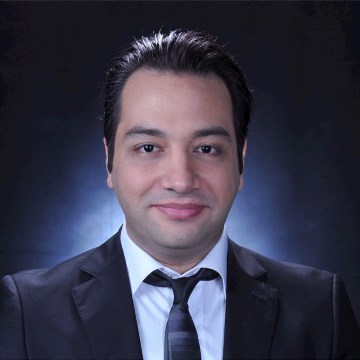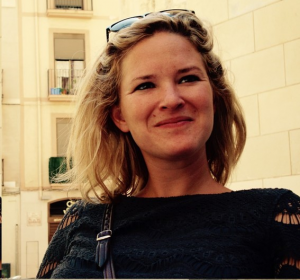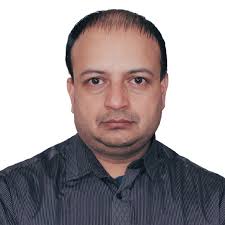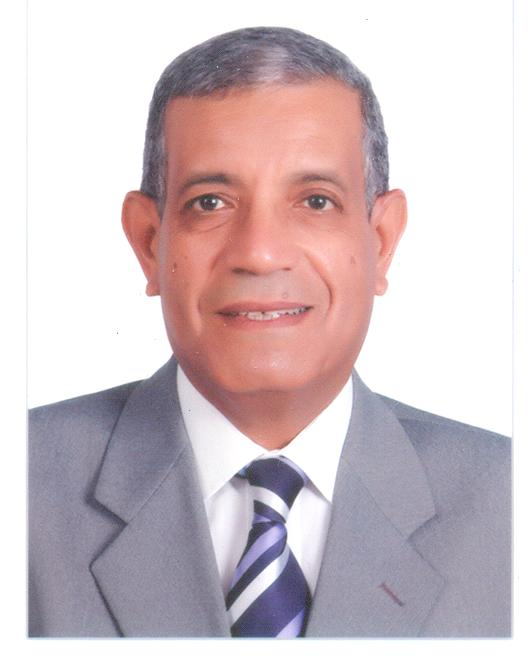Scientific Program
Keynote Session:
Title: Effect of sociodemographic variables on caries among preschool Saudi children
Biography:
Abstract:
Despite major advances in the field of caries prevention over the past few decades, there are several reports of high early childhood caries (ECC) prevalence in young children. Today, all experts on dental caries generally agree that it is an infectious and communicable disease and that multiple factors influence the initiation and progression of the disease. ECC is one of the most common dental conditions found in young children, and its prevalence appears to be increasing. The rates of ECC are highest among the socially disadvantaged such as low socioeconomic groups and indigenous and ethnic minorities. The behavioral risk factors that are directly involved in ECC have been well documented. ECC has been posing a challenge to the dental profession throughout the developing and developed world. In Saudi Arabia, dentists working with children have long expressed their concerns about the seriousness of the ECC problem. Social factors were shown to be the most important determinants of caries experience. Although the adverse feeding patterns associated with ECC are well described, the maternal psychosocial and cultural factors underlying these behaviors that place a child at risk for ECC are unclear. A mother’s health behavior often reflects her own personality and age as well as her familial, cultural, ethnic, and educational background. On the other hand, a mother is also influenced by her child’s response and temperament as well as community and cultural factors. Thus, there are highly complex pathways connecting a mother’s behavioral patterns with the child, family, and society that can impact on her child’s oral health. During the past few years, many epidemiological studies were carried out comparing caries prevalence and oral hygiene levels in children; however few studies are done in Saudi Arabia. Dental caries critically impacts the health and development of children. In order to combat dental caries in children, it’s important to investigate factors that could a ect the initiation and increase of the carious process. ECC usually a ects primary dentition of children aged between 1 to 6 years old. ECC includes rampant caries, nursing caries, and incipient caries. As known, ECC has many risk factors such as inappropriate feeding, inadequate oral hygiene, failure of professional dental care, frequent sugar snacks between meals and feeding bottles containing sweet fluid during bedtime, awareness of mother and the background of the parents play a great role in the process of ECC. As well as the misconception and false beliefs in the community and the etiology of ECC. Mother’s education level has an active role in solution for this problem. All these factors represent important risk factors in ECC.
Title: The cause of the morning headache is a violation of the venous outflow from the head due to the oncoming flowTherapeutic potential of 10-DHGD and or /Pentoxifyllin against aorta calcification in high dietary cholesterol-fed rabbits
Biography:
Abstract:
The present study aimed to investigate the inhibitory effects of 10-dehydrogingerdione (10-DHGD) and pentoxifylline (PTX) either individually or in n combined form on calcium deposition in high cholesterol diet (HCD)-fed rabbits as compared to atorvastatin (ATOR), and to clarify the underlying mechanisms. Three months old male New Zealand white rabbits received either normal chow or HCD for 12 weeks. The latter group was subdivided into five groups and concurrently treated either with vehicle (dyslipidemic control), ATOR, 10-DHGD, PTX or combined 10-DHGD and PTX. Blood samples and aortic tissue were collected for biochemical and histological analyses. HCD-fed rabbits displayed dyslipidemia, inflammation, atherosclerotic lesions and calcium deposition in aortas as compared to the normal group. This was associated with up-regulation of bone morphogenetic protein-2 (BMP-2), wingless-type MMTV integration site family 3A (Wnt3a) mRNA levels and osteopontin (OPN) expression in their aortic tissue, along with higher serum alkaline phosphatase (ALP) and osteocalcin (OCN) levels. Furthermore, a marked decrease in osteoprotegerin (OPG), along with a significant increase in receptor activator of NF-kB (RANK) levels was found in the aortic tissue of dyslipidemic rabbits. 10-DHGD and PTX monotherapy significantly modulated the afore-mentioned calcification markers and attenuated aortic calcification to a greater extent than ATOR. Combination of 10-DHGD and PTX exerted more anti-calcifying effect than either individual drug. Our findings suggested therapeutic roles of 10-DHGD and PTX against aortic calcium deposition in dyslipidemic rabbits, likely mediated by HDL-raising effect and attenuation of associated inflammation. Combination of 10-DHGD and PTX may represent a promising therapeutic strategy for aortic calcification associated with atherosclerosis.
Title: The importance of functional appliance therapy
Biography:
Golmoradizadeh Ali is a faculty member from The University of Hormozgan in Iran and committee member of various international research and dental organizations. He finished his degree in Dental Medicine from Centro Escolar University, Manila in 2013 and finished three years of orthodontic residency from the University of the Philippines, Manila. He also plays an active role as an editor in the Journal of Evaluation of Medical and Dental Sciences. Dr. Ali has presented and participated in various seminars globally as an invited guest speaker and continues to do so till this day.
Abstract:
Functional appliance therapy is one of the most important fragments in orthodontics. It is essential for the treatment of patients with skeletal or dental malocclusions. A number of functional appliances have been developed, since the time of the “activator” developed by Andresen which offer definite advantages in growth modification to correct skeletal malocclusions. However Removable functional appliances have several disadvantages, as a result, fixed functional appliances are replacing removable functional appliances, which can be attached/adapted to the fixed orthodontic appliances thus reducing treatment duration at the same time achieving orthopedic changes, followed by orthodontic changes. In this review study, we would introduce appraise the different types of the functional appliances, and continue with different categories such as fixed or removable and the best time for starting of each appliance as well as the clinical approach and home care. Sufficient knowledge of functional appliances with dental professionals can aid in saving patients from more intrusive and cumbersome corrective treatment modalities in the future. Knowledge in this specific matter from the beginning may be the only preventive measure to alleviate dental malocclusions from an early age and ultimately save patients from lessened self-confidence. In conclusion, sufficient and appropriate knowledge of functional appliance therapy is necessary for dental practitioners who are exposed to young patients in order prevent any future problems in functional aesthetics, skeletal formation, and stable occlusion.
Title: Exploring lipoprotein patterns in general population with advanced 1H-NMR testing
Biography:
Nuria Amigo Grau (co-founder and CEO of Biosfer Teslab S.L.) is graduated in Physics from the University of Barcelona, master in Biophysics (2010) and has a Ph.D. in Biomedical Engineering at the URV. She has carried out research at the Science Park of Barcelona (X-Ray Diffraction Crystallography) and worked as a researcher in Biophysics and Neural Networks at the University of Barcelona (2009-2010) during which time she visited the Complex Systems department at Weizmann Institute of Science (Rehovot, Israel). She performed her doctoral stage at the Brigham and Women’s Hospital / Harvard Medical School (Boston, USA).
Abstract:
Advanced lipoprotein testing has largely been proposed for improving evaluation of cardiovascular disease risk associated to dyslipidemia in clinical practice. The aim of the study was to define new lipoprotein patterns by 2D-diffusion-ordered ¹H-Nuclear Magnetic Resonance (NMR) spectroscopy data (Liposcale Test)1. This cohort included 1442 subjects who underwent a health checking. The Liposcale Test was used to quantify lipid content –cholesterol (-C) and triglycerides (-TG)-, particle number (-P) and size (-Z) of main lipoprotein classes (VLDL, IDL, LDL, HDL) from plasma. We performed exploratory multivariate analysis (unsupervised k-means clustering) to identify four lipoprotein patterns among population. Graphical models were designed to represent each pattern. The statistical method grouped study subjects according to their lipoprotein pattern. Group A (29%, age 25±16, 37% women, BMI 22±5) and group B (9%, age 45±14, 44% women, BMI 27±6) were constituted by apparently healthy people with low lipid levels and low risk lipoprotein pattern. Subjects in group C (37%, age 52±15, 45% women, BMI 28±6) were mainly hypercholesterolemic exhibiting mean LDL-C level around the decisional threshold (133 mg/dl), increased number of large, medium and small LDL particles as well as large LDL mean size (21.23 nm). This group showed varying concentrations in IDL-C and IDL-TG. Hypertriglyceridemic subjects were found in group D (25%, age 55±13, 45% women, BMI 32±7) showing high levels of VLDL-TG (161 mg/dl) and IDL-TG (14 mg/dl) accompanied by small LDL mean size (20.83 nm). We found varying concentrations in small LDL particles and triglyceride composition in HDL among these subjects. The Liposcale Test provides a more complete insight into lipid metabolism disturbances. Lipoprotein pattern recognition beyond standard lipid values allows a broad analysis of lipoprotein disturbances, a better stratification of patients and thus a more accurate clinical assessment.
Title: Temporary anchorage devices (TADs) in orthodontics in enhancing esthetics and function
Biography:
Niroj Raj Neupane has completed his master’s degree in orthodontics getting a full scholarship from Nanjing University, China with excellent grades. He completed his bachelor’ s degree (B.D.S) with a full scholarship from University of health sciences, Pakistan and was the recipient of an award from the then governor of Punjab, Pakistan for obtaining the first position in the university in first-year examinations. He has published some papers. He is an international speaker for various conferences and seminars. He is currently working as a foreign expert consultant orthodontist in Suzhou Dental hospital, China.
Abstract:
Temporary anchorage devices have proven to be a useful armamentarium for dentists and orthodontists throughout the world. Now, cases which initially believed to be a surgical one can the without surgery with results as equivalent to the one that would have first-year with University by using temporary anchorage devices. I will be showing a University case where surgery was one of the options provided to the patient but ultimately treated without surgery with the use of TADs. Interestingly, the same 6mm TADs were used first in the lower anterior segment for intrusion and later in the upper posterior a for retraction of anterior segment as the patient was reluctant to use new sets of TADs (8mm) because of financial issues. The dramatic change in facial esthetics and function obtained by the use of TADs resulted in the patient.
Title: Dyslipidemia induced inflammation, platelet activation and endothelial dysfunction in rabbits: Protective role of 10-DHGD
Biography:
Mohamed M Elseweidy has completed his Ph.D. at the age 35 years from the faculty of pharmacy - Cairo University and Postdoctoral studies from Medical College of Georgia - Augusta GA- USA. He has published more than 70 papers in reputed journals and has served as Editorial Board member of certain journals. He is a Professor of Clinical Biochemistry and Clinical nutrition and a supervisor of Research Team Members in the faculty of Pharmacy - Zagazig University, Egypt. His field of interests are Diabetic complications and Hyperlipidemia, Natural Antioxidants and their applications in Hyperlipidemia and Diabetic nephropathy, Gastritis, Role of Helicobacter pylori and Natural products as Therapeutic agents
Abstract:
Background and aims: Last years we have reported that 10-Dehydrogingerdione (10-DHGD) is a novel Cholesterol ester transfer protein (CETP) inhibitor of natural origin. Such study demonstrated its potential to attenuate lipid profile, inflammation, oxidative stress and additional risk markers in dyslipidemic rabbits. Some synthetic CETP inhibitors have recently been reported to suppress PCSK9. Therefore the present study aimed mainly to clarify 10-DHGD effect on platelet activation, endothelial dysfunction and cellular adhesion molecules in relation to certain biomarkers. The latter includes a lipogram profile, inflammatory markers, CETP inhibitory effect and PCSK9 suppression as compared to atorvastatin in dyslipidemic rabbits. This may have a value as the therapeutic target of dyslipidemia and subsequent atherosclerotic complications. Results: Both 10-dehydrogingerdione and atorvastatin significantly reduced CETP protein level, CETP activity, serum PCSK9 , LDL-C and raised HDL-C levels as compared to control rabbits (p< 0.001). Both treatments induced a marked decrease in the interferon-gamma (IFN-γ), soluble CD40 ligand (sCD40L), soluble P-selectin (sP-selectin), inflammatory cell infiltration, atherogenic indexes as well as aortic intima/media ratio, respectively as compared to the control group (p< 0.001). These Markers showed a significant correlation with PCSK9 suppression and CETP inhibitory effect, however, 10-dehydrogingerdione exerted marked potential regarding these biomarkers as compared to atorvastatin. Conclusion: Our findings suggest that 10-dehydrogingerdione is a promising PCSK9 inhibitor and of significant value against many atherosclerotic risk factors
Oral Session 1:
- Preventive Cardiology and Lifestyle Medicine | Cardiac Care Equipment and Market | 3D Printing in Dentistry | Oral Cancer and Dentures | Oral and Dental Health
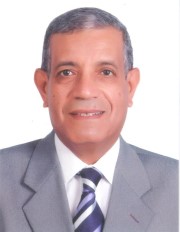
Chair
Mohamed M Elseweidy
Zagazig University, Egypt
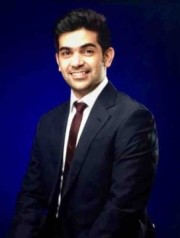
Co-Chair
Mohammed Abdullah Alkahtani
Ministry of Health, Saudi Arabia
Title: Implant supported over dentures the oncology challenge
Biography:
Trevor Brooker qualified as a Dental Technician from Brooklands Technical College in 1983 and as a Clinical Dental Technician in 2014, gaining an enviable reputation as a premier Denture and Implant Technician. Working closely with dentists in the design and construction of implant overdentures, enables him to offer advice and troubleshoot, along with sharing his knowledge and experience. In 2012 he was invited to join the International Team for Implantology (ITI) speaker list and has been a guest speaker to numerous postgraduate, study clubs and dental companies. He was recently involved in the development and launch of a new range of prosthetic teeth for a major well known dental company as well as being the first technician to complete the first UK Trefoil case and the first UK Novum case.
Abstract:
I will be looking at over dentures on Cad/Cam bars, mainly focusing on the more challenging extreme oncology/obturator cases. All the cases are mainly maxillary but I will touch on the more general overdenture case looking at patient choice verses function. I will look at if going Cad/Cam is always the best option and how can manual milling help or are gold bars still a true positive alternative. How to choose the right attachment for the case and is the choice important? I will also look to see if the choice of the Cad milling company is important or is it the operator that is the key to success and how far can you push the limits?
Title: Frail elderly-dental outreach-the future in 3-D
Biography:
Jon Strom practiced in West Vancouver for 42 years after 5 years in Armed Forces. He followed his Patients who moved into Long Term Care Homes. He was puzzled and challenged by the difficulty in caring for their Dental needs in a very restricted setting. He ended up providing Dentistry for ten years and tried to develop protocols for those that couldn’t access his Clinic easily. He was on the Long Term Care Committee for the Vancouver Dental Society and worked to fund a Geriatric Chair at UBC. He took up the study of providing Dental Services to the Frail Elderly who through physical and sensory decline have lost access to Dental Clinic environments. He will describe some new technologies that will enhance effective Dental care in this area.
Abstract:
The Increase in longevity and the looming Geriatric tsunamii of Frail elderly is posing a problem for the provision of good oral health as patients lose access to the Dental Office due to reduced mobility. How will the Dental Profession deal with the obvious complications that and demographic tidal wave presents in the coming decades. As there is a revolution in the provision of extended care in the Medical profession so there must be by the Profession of Dentistry. Here with we will try to prognosticate where this future Dental Practice modes may provide some solutions. It is difficult to reach out to Long-Term Care Institutions and homebound Dental patients with a good Oral Hygiene program let alone investigate and make reliable surveys of their oral health status with the present technologies we have. However there are potential new technologies and systrms which could allow access to outpatients by Dental Personnell from private practice clinics..The use of Android Phones to transmit images and text information from remote locations would allow dental records to be built up and sent to the Dental Office for perusal by Dental Professionals. More significantly the remote use of 3D Dental models might allow the provision of appliances that could enhance oral hygiene as well as treat dental deficiencies.In this presentation we will review and present possible scenarios that would allow Dental Offices to institute outreach programs that would allow them to monitor their Patients oral status and provide programs to enhance their Oral Health even though actual access to the Dental Office itself is compromised. Better Nutritional programs and outreach programs can be instituted very easily. This presentation will suggest what the future of Outreach Dentistry might look like and bring efficiencies and effective protocols to the frail elderly who at present have difficulty accessing good Oral hygiene monitoring or successful methods l of good hygiene practices. The lack of which can be devastating for the frail elderly with Medical complications.
Title: Fetal heart rate extraction from abdominal electrocardiograms through multivariate empirical mode decomposition
Biography:
Praveen Gupta received BE (Distinction) degree in Electronics Engineering from Sardar Vallabhbhai National Institute of Technology, Surat India in 1994. He completed his Master’s degree in VLSI from Malaviya National Institute of Technology, Jaipur, India in 2008. He started his professional career with the position of Lecturer (Electronics) in the Department of Technical Education (DTE), Rajasthan in 1995. Presently, he is a Lecturer (Selection Grade- stage-4) in DTE, Rajasthan. He has also worked as Technical Advisor in Government of Rajasthan from Dec.2014 to Feb.2016. His field of interest is Biomedical Signal Processing, specifically abdominal ECG signal processing, intracellular neuronal recordings, and algorithms. Apart from his engineering interests, he is greatly interested in policy issues in higher & technical education. He has a professional membership of IEEE.
Abstract:
Assessment of fetal heart rate (FHR) and fetal heart rate variability (fHRV) reveals important information about fetal well-being, specifically in high-risk pregnancies. Abdominal electrocardiogram (abdECG) recording is a non-invasive method to capture fetal electrocardiograms. In this paper, we propose a methodology to extract FHR (fetal RR time series) from the abdECG recordings using the recently introduced multivariate empirical mode decomposition (MEMD) technique. MEMD breaks a signal into a finite set of intrinsic mode functions (IMFs). First, elimination of the noisier abdECG channels, based on the comparison of similar indexed IMFs that were obtained through the MEMD technique, is conducted. Thereafter, denoising of the remaining abdECG channels is performed by eliminating certain similar indexed IMFs. The unwanted mother QRS complexes are removed from these noise-free abdECG channels, and the candidate fetal R-peaks are detected through a wavelet-based approach. The proposed methodology is validated using an open source real-life clinical database. The proposed technique resulted in a high value (0.983) of cross-correlation between the detected and true FHR signals.
Title: The relationship between MTHFR C677T gene polymorphism and essential hypertension in a sample of an Algerian population of the Oran city
Biography:
Asma Amrani-Midoun is a lecturer. She belongs to Biotechnology Department, University of Oran 1 Ahmed Benbella, Oran, Algeria she is also Faculty of Sciences of Nature and Life, University of Oran 1 Ahmed Benbella, Oran, Algeria. She is the corresponding author of the article “The relationship between MTHFR C677T gene polymorphism and essential hypertension in a sample of an Algerian population of Oran city”.
Abstract:
Background:
Many studies have investigated the role of 5,10-methylenetetrahydrofolate reductase (MTHFR) C677T gene polymorphism in essential hypertension (EH), but with conflicting results.
Aim:
To determine the eventual association between 5,10-methylenetetrahydrofolate reductase (MTHFR) C677T gene polymorphism and hypertension in a sample of the Algerian population from the Oran city.
Methods:
A case-control study has been performed in 154 subjects including 82 hypertensives defined as subjects with elevated systolic blood pressure SBD![]() 140mmHg and or sustained diastolic blood pressure DBP≥90mmHg, and 72 normotensive subjects. Polymerase chain reaction (PCR) combined with restrictive fragment length polymorphism (RFLP) was used to detect the MTHFR C677T variant.
140mmHg and or sustained diastolic blood pressure DBP≥90mmHg, and 72 normotensive subjects. Polymerase chain reaction (PCR) combined with restrictive fragment length polymorphism (RFLP) was used to detect the MTHFR C677T variant.
Results:
We observe no significant differences between allelic and genotypic frequencies between cases and controls for C677T polymorphism (OR=1.51, 95% CI= 0.89-2.56, P=0.13). Analyses adjusted for age, sex and body mass index improved the association level, though the association was still not significant (30% vs. 22%, OR=1.75, 95% CI= 0.95-3.24, P=0.07).
Conclusion:
This work showed that genetic polymorphism related to the MTHFR gene (C677T) is not associated with the risk of hypertension in this sample of the Algerian population. Larger case-control samples are required to clearly assess the role of this genetic variant in EH.

